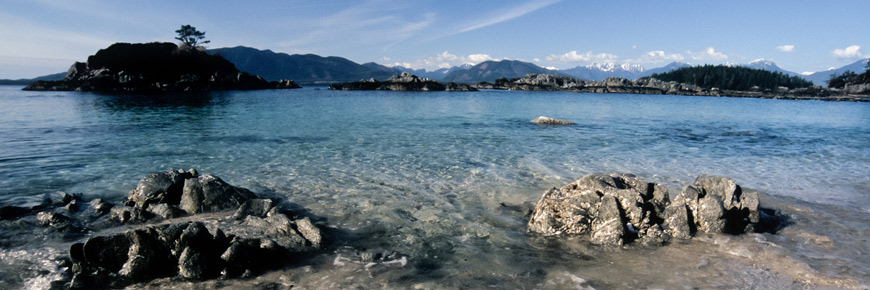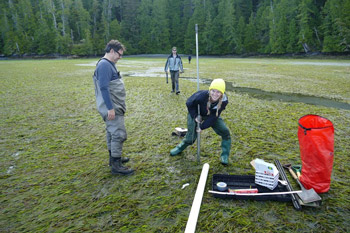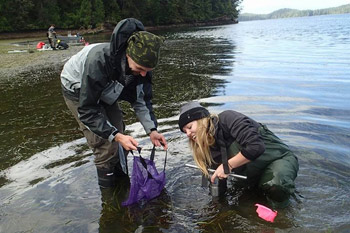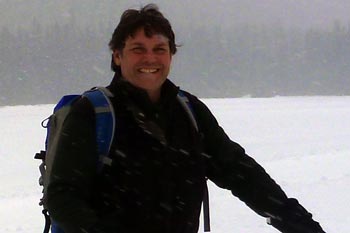
Blue carbon on the West Coast
Parks Canada scientist Marlow Pellatt and his team are studying the ability of eelgrass and salt marshes to absorb carbon dioxide, a major greenhouse gas.

Walking this coastal park, you are constantly looking up and out—at soaring eagles, towering Sitka Spruce and the vast shimmering surface of the ocean.
But right now, Marlow Pellatt’s attention is focused downwards, on the mud and eelgrass at his feet.
A coastal ecologist with Parks Canada, Dr. Pellatt is studying the eelgrass meadows and tidal salt marshes of Pacific Rim National Park Reserve. These shallow-water ecosystems have an impressive capacity to absorb carbon dioxide—a major greenhouse gas and driver of climate change.
Did you know?
Scientists estimate that these ecosystems can hold up to 3 to 5 times the amount of carbon absorbed by forests, the traditional carbon “sinks.”
While carbon is stored in the plant material, much of it is captured in the sediment of these ecosystems. According to one estimate, a single hectare of salt marsh can contain the same amount of carbon produced by 488 cars in a year.
These ecosystems not only take carbon out of the air, but keep it safely underground for a long time—much longer than a mature forest.
“A salt marsh can accumulate sediment for thousands of years,” says Dr. Pellatt. “Eelgrass may be doing the same.”
Mapping the ocean’s living margins
A joint effort
Dr. Pellatt’s research is part of an international effort to study and preserve these coastal areas. The Commission for Environmental Cooperation oversees a joint initiative on “blue carbon” (the carbon stored in marine ecosystems) which involves Canada, the United States and Mexico.

The initiative is looking at salt marshes, tidal wetlands, seagrasses (including eelgrass) and mangroves.
One of Dr. Pellatt’s tasks is to determine whether northern coastal ecosystems can absorb as much carbon as, say, the seagrass and mangrove swamps of the south. “We want to find out whether the numbers are reflective of estimates that were done in the tropics,” he says.
His research area is Grice Bay in the park reserve—an ideal locale since, as he says, “it’s not getting hammered by waves all the time.” The first step is to map the area using drones, underwater cameras and a global positioning system. Part of this work involves taking cores (sinking a tube into the sediment and plant material to draw up a sample).
Next, Dr. Pellatt’s team heads to the lab, where they burn the samples at high temperature and use elemental analysis to measure the carbon in the sediments. They use radiometric dating techniques to determine the amount of carbon stored over time in the cores.
The researchers can then use their mapping analysis to estimate how much carbon is stored in the entire area.
So far, their research has shown that the different coastal ecosystems have very different storage capacities. BC’s eelgrass beds appear to store considerably less carbon than the global average for this ecosystem, but the province’s salt marshes are on a par with other marshes on a global scale. In fact, the researchers found that BC’s salt marshes capture and store more carbon than the province’s boreal forest soils.
Dr. Pellatt’s work gives us one more reason for preserving these living margins of the ocean.
If we know how much carbon is released when these ecosystems are filled, eroded and dredged up...we may be more cautious in our actions.

Understanding these ecosystems will not only help improve the ecological integrity of the park; it is essential knowledge for addressing climate change. “If we can add another benefit like carbon storage,” says Dr. Pellatt, “it’s a win-win.”
- Date modified :